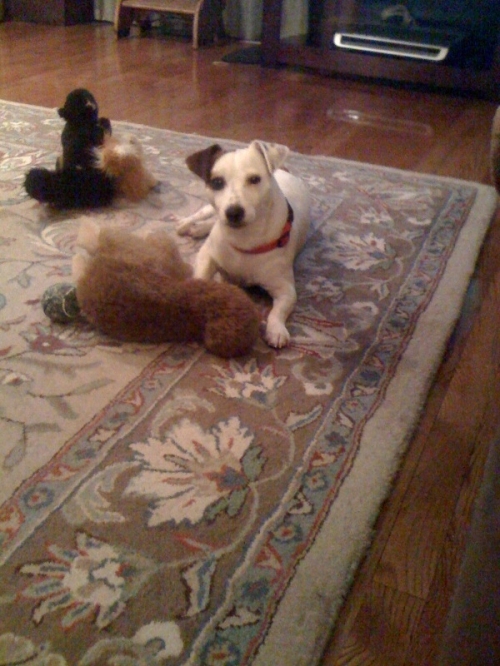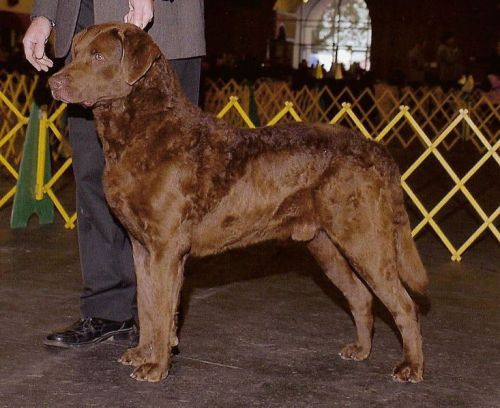
Willie and his squirrels.
Willie is a young Jack Russell from Fayetteville, North Carolina, who recently spent a weekend at my grandpa’s house in very rural West Virginia. Willie lives with my aunt and uncle, and he’s very smart. He is dead serious about retrieving things, which is more than I can say about Miley.
Like many of his breed, he is likes to chase small furry things. At home, Willie and Madeleine, the other Jack Russell who lives at that household, can be launched with the mere mention of the word squirrel. They take squirrel hunting very seriously. It is as if it is their main duty to keep the bushy-tailed rats off the lawn.
However, they are contained in a fenced yard, allowing the squirrels an easy escape from the jaws of these small brown and white wolves. In all the years they have been chasing squirrels in North Carolina, they have caught only one squirrel. (Of course, dogs have a hard time catching squirrels, whether they are fenced in or not.)
As I have mentioned earlier, West Virginia’s trees have not produced enough mast this year to feed the large numbers of squirrels, turkeys, and white-tailed deer.
My grandpa has taken pity upon the squirrels, in part because he actually wants to keep their numbers high for next year. He hunts squirrels, and he knows that if they squirrels go into winter without a bounty of nuts from the fall, there will be fewer squirrels next year.
So he has set up a massive squirrel feeding operation. One of his feeders is on the deck in full view of his sliding glass door. Here, the vast hordes of fox squirrels and normal and melanistic grays fight over the corn in the feeder all day long. It is quite entertaining to watch.
And when Willie and Maddy were at his house a few weekends ago, they very much agreed. They would stand by the sliding glass door like wolves staring down a herd of caribou. Maddy would quiver all the way down to the tip of her docked tail, and Willie would stand like a pointer with one foot raised. When the sliding glass door was opened the first time, Maddy ran right off the deck after the squirrels, and Willy chased them out of the yard and across the old pasture into the woods. This was Jack Russell heaven.
Getting to watch and chase so many squirrels really had an effect on Willie.
When they returned home, Willie went to his toy box and took out three of his stuffed toys.
Now, Willie has a collection of toys. He has more stuffed toys than many children do. He had a wide selection to choose from.
So it was very interesting that Willie picked out the three stuffed squirrels that were in his box.
Willie was expressing himself with his toys. I don’t think it takes a genius to recognize this.
He was showing his people that he really liked watching and chasing those large numbers of squirrels all weekend.
And it is really quite remarkable. He was using objects that represented the animals that he saw. It is obvious that he knows those stuffed squirrels aren’t the same as the real ones, but he does know that they somehow represent the real ones.
***
Willie is not the only dog to use toys to represent things.
I saw this program on the National Geographic Channel a few years ago. This doberman had been abandoned and had trouble trusting people. He eventually came out of his shell, but what was really interesting is that he also used toys to express himself:








